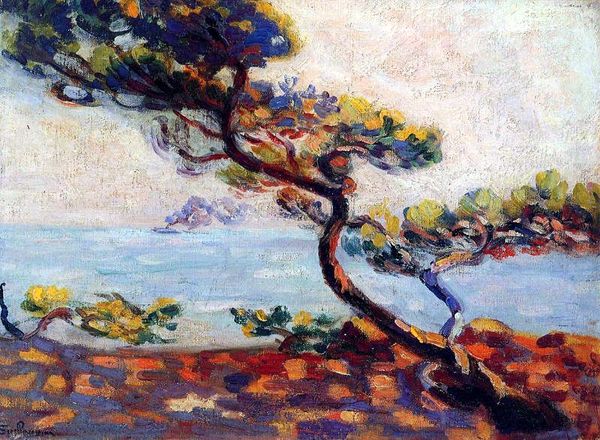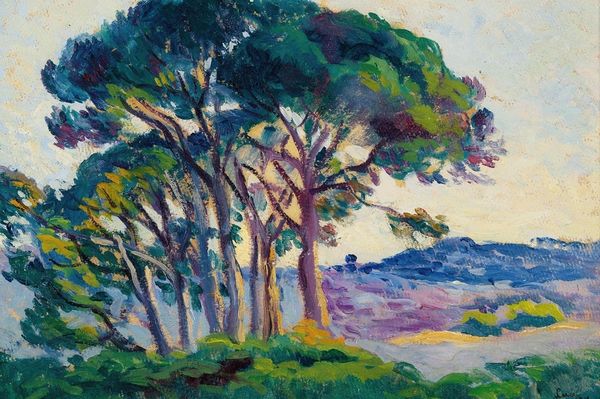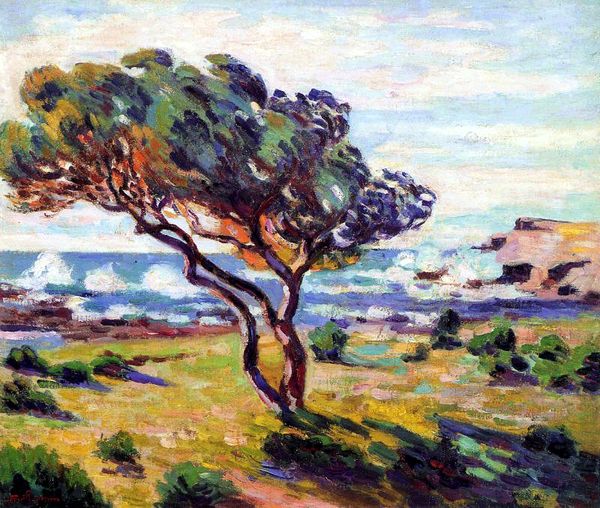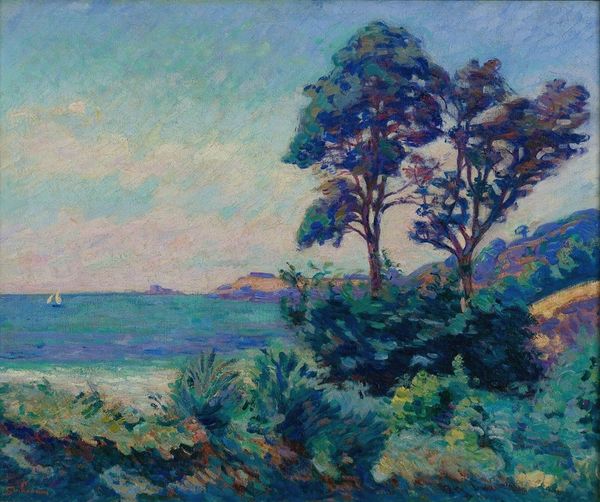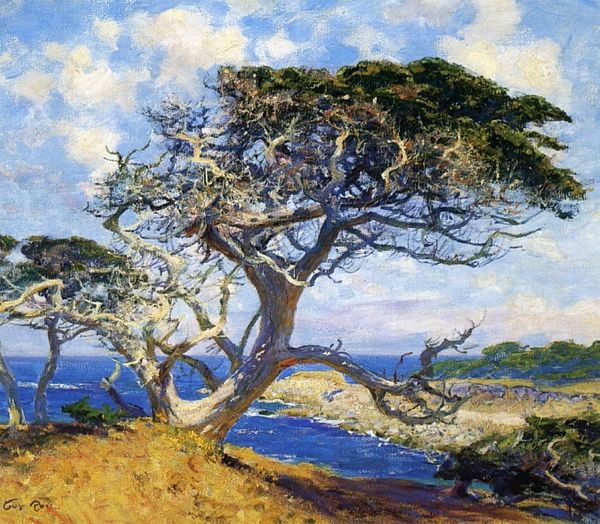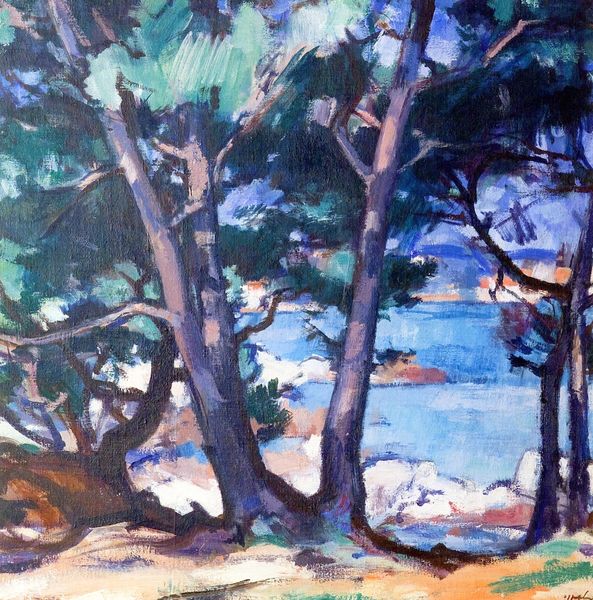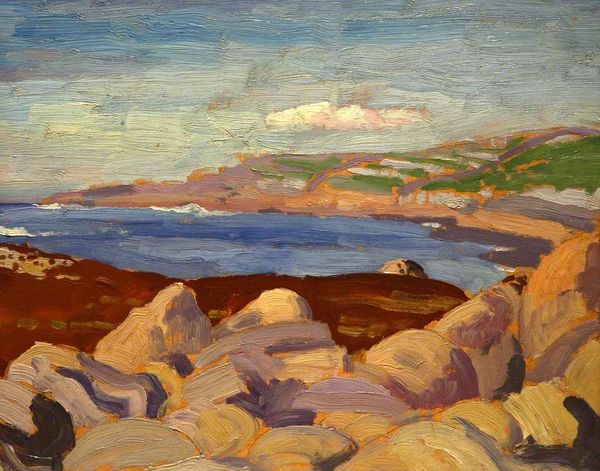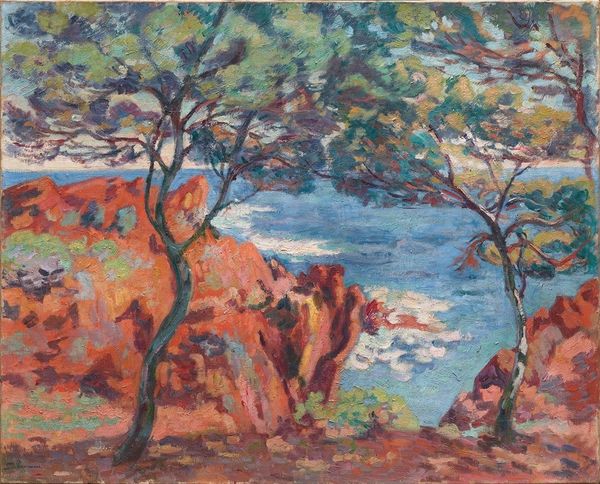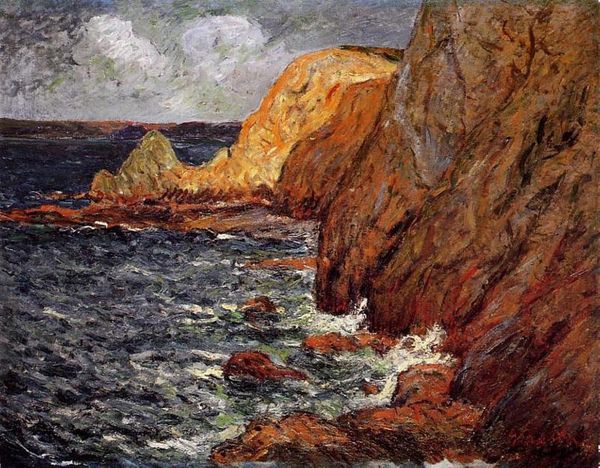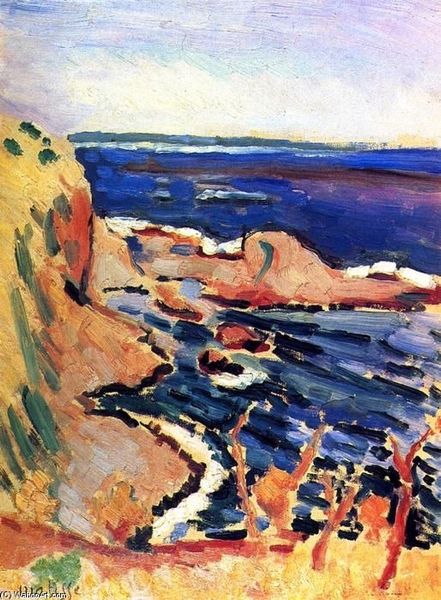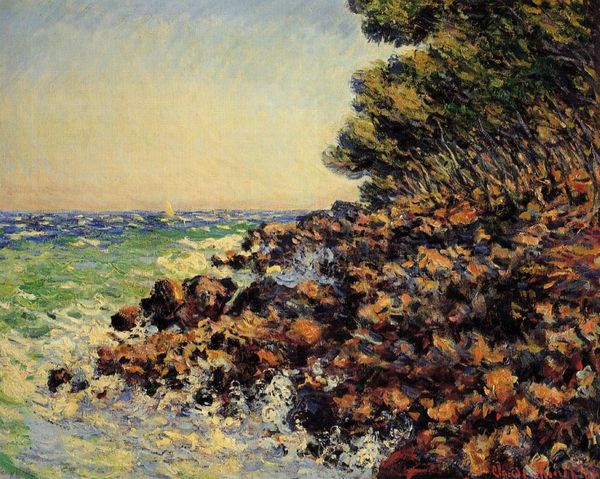
Copyright: Public domain
Editor: So, this is Armand Guillaumin's "Les Rochers Rouges," painted in 1894. The vibrant colors immediately grab your attention, especially the contrast between the red rocks and the blue sea. I’m struck by how he’s used paint to create texture. What strikes you most about this painting? Curator: It's fascinating to consider Guillaumin's artistic labor here. Think about the physical act of *plein air* painting: transporting materials, battling the elements. He had to create those striking impasto effects from mixing pigments. Can you imagine the availability of paints, the cost of materials at this time and how it defined the art making process? Editor: That’s a perspective I hadn’t fully considered. It makes me wonder about the societal implications. Were these materials accessible to all artists? Curator: Precisely! The materials and their qualities heavily influenced his practice and reception. Oil paint becoming widely available was game-changing for artists, offering versatility and richer colors, which directly enabled impressionist experiments such as those seen here, but it also excluded some artists from freely engaging the profession. Editor: So the material and the economic environment were defining factors of who could and could not produce impressionistic landscape art. It shifts how I view the image. I hadn’t considered that economic structures play into plein air painting! Curator: Indeed. And recognizing the material conditions lets us investigate what lies beyond what appears in the work itself. Editor: This makes me want to go look more into the manufacturing and economic status of art in the Post-Impressionistic period. Thanks.
Comments
No comments
Be the first to comment and join the conversation on the ultimate creative platform.
